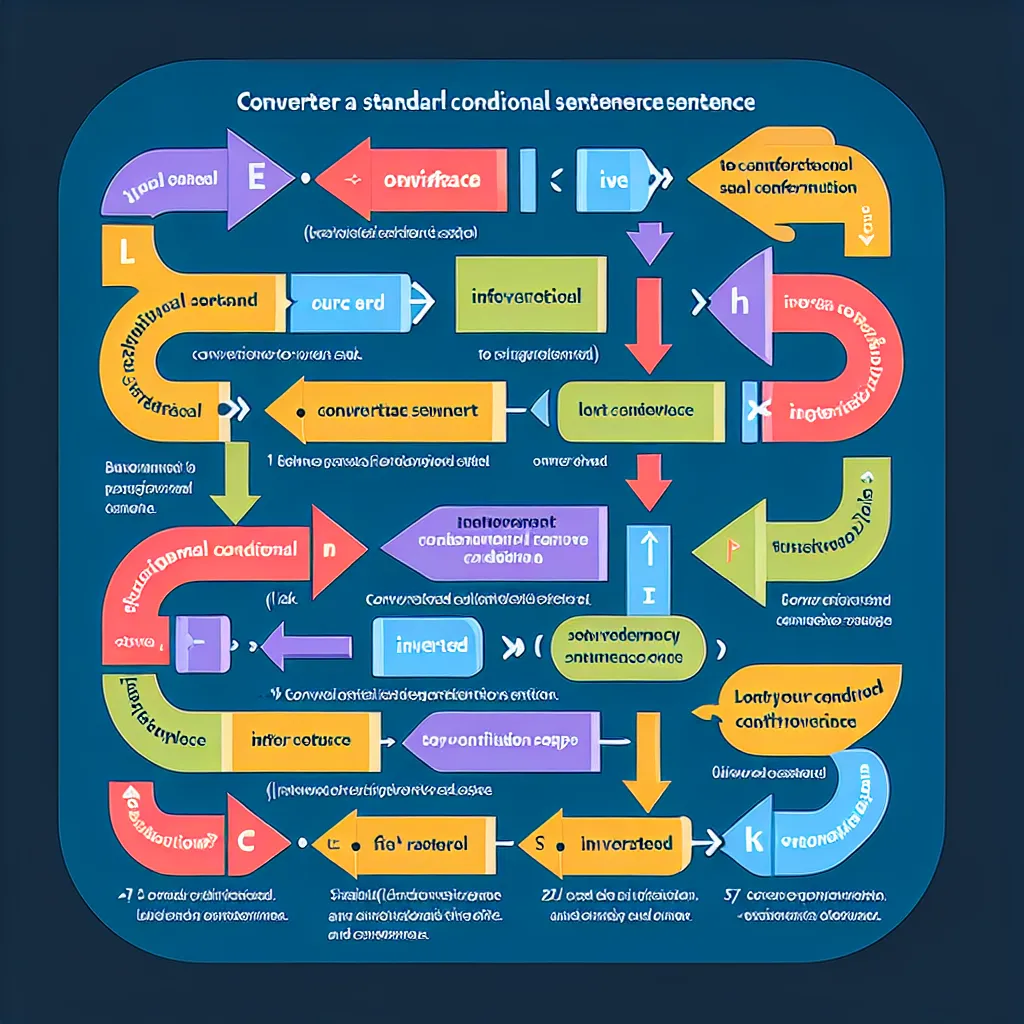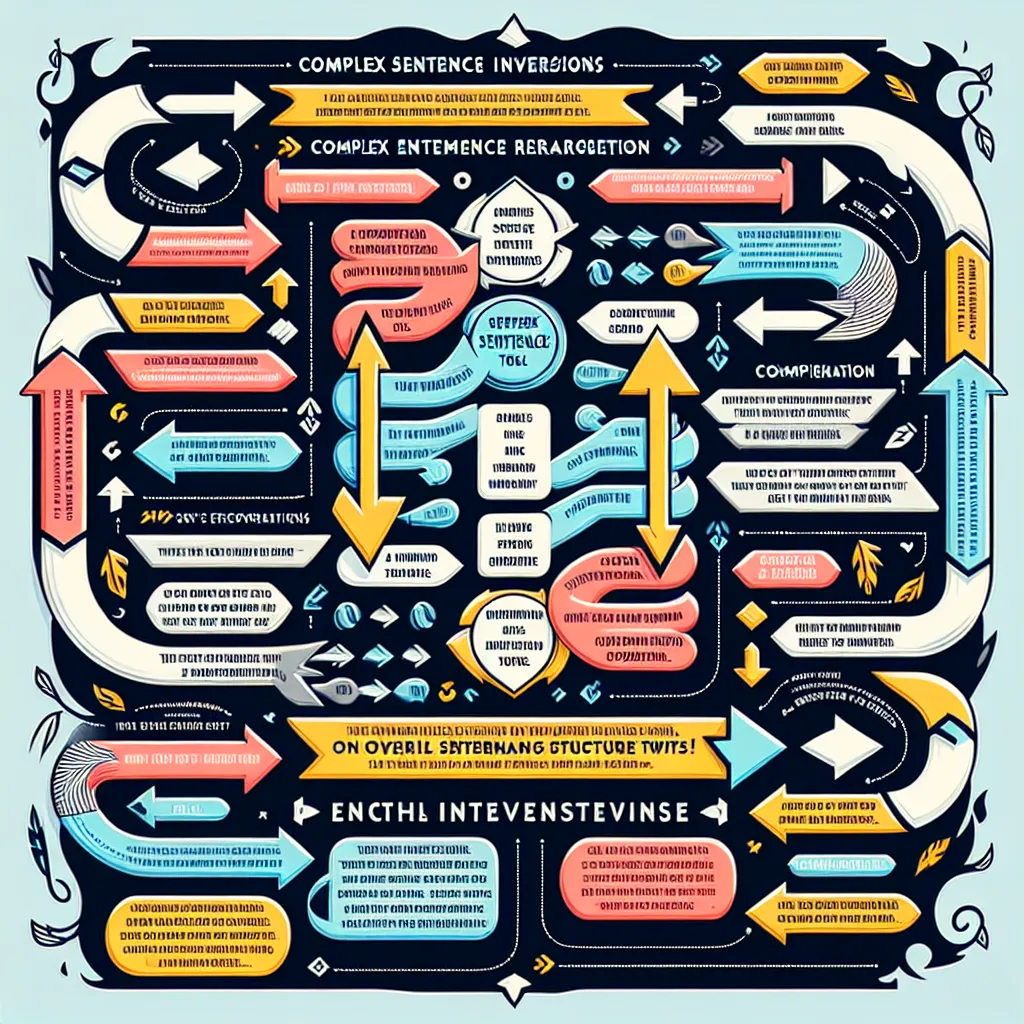Mastering the art of using inversion in conditional sentences can significantly enhance your English language skills, particularly for advanced learners and those preparing for exams like IELTS. This guide will walk you through the intricacies of this grammatical structure, providing clear explanations, examples, and practical tips to help you incorporate inversion into your conditional sentences with confidence.
Understanding Inversion in Conditional Sentences
Inversion in conditional sentences is a sophisticated grammatical technique that involves changing the typical subject-verb order to emphasize a condition or create a more formal tone. This structure is often used in academic writing, literature, and formal speech to add variety and emphasis to conditional statements.
Why is Inversion Important in Conditional Sentences?
- Emphasis: Inversion adds emphasis to the condition being stated.
- Formality: It creates a more formal and sophisticated tone in writing and speech.
- Variety: It provides an alternative way to express conditional ideas, enriching your language use.
- Advanced Language Skills: Mastering inversion demonstrates a high level of English proficiency.
 Inversion in conditional sentences diagram
Inversion in conditional sentences diagram
Types of Inversion in Conditional Sentences
1. Inversion in Zero and First Conditional Sentences
In zero and first conditional sentences, inversion is less common but can be used for emphasis.
Normal: If you heat ice, it melts.
Inverted: Should you heat ice, it melts.
Example:
- Normal: If it rains tomorrow, we’ll cancel the picnic.
- Inverted: Should it rain tomorrow, we’ll cancel the picnic.
2. Inversion in Second Conditional Sentences
Second conditional sentences use inversion more frequently, especially in formal contexts.
Normal: If I were you, I would accept the offer.
Inverted: Were I you, I would accept the offer.
Example:
- Normal: If he had more time, he would travel the world.
- Inverted: Had he more time, he would travel the world.
3. Inversion in Third Conditional Sentences
Third conditional sentences often use inversion to express regret or hypothetical past situations.
Normal: If I had known about the party, I would have attended.
Inverted: Had I known about the party, I would have attended.
Example:
- Normal: If they had arrived earlier, they wouldn’t have missed the train.
- Inverted: Had they arrived earlier, they wouldn’t have missed the train.
How to Form Inverted Conditional Sentences
- Identify the type of conditional sentence.
- Remove ‘if’ from the beginning of the clause.
- Move the auxiliary verb (had, should, were) to the beginning of the clause.
- If there’s no auxiliary verb, use ‘should’ or ‘were to’ at the beginning.
 Step-by-step guide to forming inverted conditionals
Step-by-step guide to forming inverted conditionals
Common Inversion Structures in Conditional Sentences
-
Had + subject + past participle (for third conditional)
Example: Had I studied harder, I would have passed the exam. -
Were + subject + to + infinitive (for second conditional)
Example: Were she to win the lottery, she would buy a mansion. -
Should + subject + base verb (for first conditional)
Example: Should you need any assistance, please don’t hesitate to ask.
Practice Exercises
To master the use of inversion in conditional sentences, try these exercises:
-
Rewrite the following sentences using inversion:
a. If I had known earlier, I would have told you.
b. If you should see John, tell him to call me.
c. If it were not for your help, I wouldn’t have succeeded. -
Create your own sentences using inverted conditionals for each type (zero, first, second, and third).
-
Identify inverted conditionals in a piece of formal writing or literature and analyze their effect on the tone and emphasis of the text.
Tips for Using Inversion in Conditional Sentences
- Practice regularly: Incorporate inverted conditionals into your daily writing and speaking.
- Read formal texts: Expose yourself to examples of inversion in academic and literary works.
- Start with simple structures: Begin with basic inversions before moving to more complex ones.
- Use in appropriate contexts: Remember that inversion is more suitable for formal situations.
- Pay attention to verb forms: Ensure you’re using the correct tense and aspect in your inverted conditionals.
For more advanced grammar structures, you might find our guide on how to use advanced voice structures helpful in enhancing your overall English proficiency.
Common Mistakes to Avoid
- Forgetting to change word order: Always move the auxiliary verb to the beginning of the clause.
- Using inversion in informal contexts: Be mindful of the appropriate setting for using this structure.
- Overusing inversion: While it’s a useful technique, don’t overuse it in your writing or speech.
- Neglecting subject-verb agreement: Ensure the inverted verb agrees with the subject.
If you’re looking to improve your overall conditional sentence usage, our article on how to use conditional sentences in writing provides additional insights and tips.
Conclusion
Mastering the use of inversion in conditional sentences is a valuable skill for advanced English learners. It adds sophistication to your language use and demonstrates a high level of proficiency. By understanding the different types of inversion, practicing regularly, and being mindful of common pitfalls, you can effectively incorporate this structure into your English communication. Remember, like any advanced grammatical technique, it takes time and practice to master. Keep experimenting with inverted conditionals in your writing and speech, and you’ll soon find yourself using them with confidence and precision.
For those looking to further enhance their advanced grammar skills, our guide on best practices for learning grammar at an advanced level offers additional strategies and resources.




